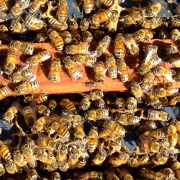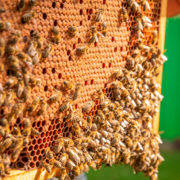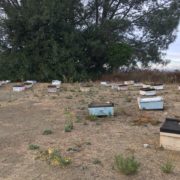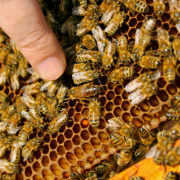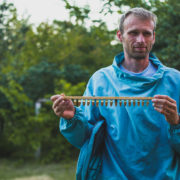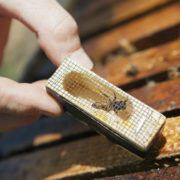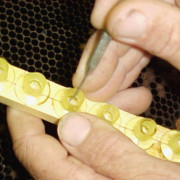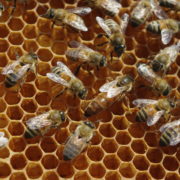The Best and Worst Seasons for Raising Queen Honeybees
At Wildflower Meadows, we raise queen honeybees for a relatively long season, which begins in March and carries on through September. Our mild weather is typically accommodating for such a long season. However, the conditions for raising queen honeybees throughout this lengthy season vary, and are not always ideal. As a result, we have to compensate for fluctuations throughout the year.
In raising queens, the most important factor in determining both the quantity and quality of queens is the condition of the cell building colonies. A cell building colony is where the grafted queen cells are fed royal jelly and are developed into virgin queen bees. The condition of the cell building colonies naturally varies throughout the season, and these variations directly affect queen rearing. Sometimes conditions are good, and sometimes they are not.
The basic requirements of a cell building colony are that it needs to be well-stocked with nurse bees, well-fed with plenty of pollen for producing royal jelly, and consistently strong and healthy. Most importantly, a cell building colony needs to be well-motivated to produce queen cells. There is generally one period of the season when all of these conditions come together most perfectly, and this is the ideal season for rearing queens.
Typically, this ideal season is during the mid-to-late spring, which also, not coincidentally, is peak swarming season. The swarming season is also typically when the most favorable nutrition conditions are available for the cell-building colonies, with plenty of high-quality pollen coming in. It is when the bees are most naturally motivated to produce queen cells for swarming. The bees know that the conditions are good and they are motivated to get to business! In short, the best time of the year to rear queens is generally the same time of year when the bees are most apt to swarm. The longer that conditions are favorable for swarming, the longer the queen producer has to raise abundant and well-nourished queens.
Some of the worst times of the year to produce queens are during the very early season, during the very late season, and during times of drought. During the very early season, the ratio of older bees to nurse bees is at its worst, with a high percentage of older bees that overwintered and a much smaller percentage of vital nurse bees. This is because in the early spring, the cell building colonies have not yet had enough time to begin brood rearing in earnest. The small number of nurse bees means that less bees are available to properly feed queen cells. During the early season, a conscientious queen producer needs to limit the production of queen cells to a smaller number; since even though a cell building colony may look strong, it is filled with only a small percentage of nurse bees.
During the later season, a cell building colony is more motivated to shut down for winter than it is to produce swarm cells. At this point in the season, a cell building colony may still be receiving proper nutrition, but its motivation to produce queen cells is instinctively low. The queen producer has no way of changing this. Therefore, once again, the beekeeper needs to limit the production of queen cells to a smaller number towards the end of the season.
Drought poses two different problems: During drought, the bees are less likely to want to expand or swarm, so their motivation to produce queen cells is reduced, and during drought, nutrition becomes a factor. The nurse bees have less access to quality pollen sources, which limits their ability to produce nutritious royal jelly. Queen production can suffer. Therefore, any conscientious queen producer who desires to continue to rear queens during a period of drought needs to aggressively feed the cell building colony both syrup and a pollen substitute in order to offset the effects of the drought, thereby limiting the ability of the cell building colony to feel the drought’s effects.


